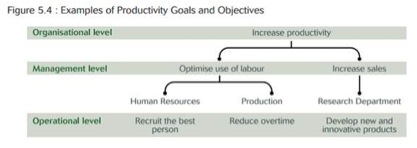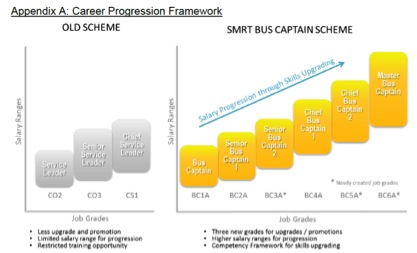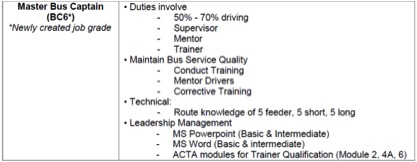Singapore has recently emerged 3rd out of 122 countries in World Economic Forum’s Human Capital Index. Although Singapore has gotten a good score, deeper examination reveals telling signs of what has been neglected and offers learning opportunities for managers in today’s tight labour market. It also provided 3 Reasons Why Managers Need Progressive Wage Model In Singapore.
What Is Human Capital Index About?
Countries are ranked based on these 4 pillars – Education, Health and Wellness, Workforce and Employment and Enabling Environment.
How Singapore Measure Up
Whilst Singapore was ranked 2nd for Education, our high levels of stress and relatively higher percentage of deaths under 60 from non-communicable diseases indicates that workers could be better taken care of.
Although our official unemployment rate is low, our relatively weak labour force participation rate indicates that many residents here are not actively working, perhaps due to constraints of family (such as caregivers for young or elderly) or otherwise (such as the physically-disadvantaged).
Singapore’s relatively dismal performance in social safety net protection may raise eyebrows whether the less well-off are adequately covered.
Singapore’s position at 13th for Health & Wellness is a big concern. Commanding the world’s 4th best healthcare infrastructure (World Competitiveness Yearbook 2010, IMD) meeting our basic healthcare needs, it would seem that everyday stresses are the culprit for bringing down Singapore residents’ well being.
Why Are We Stressed?
Among other various factors, job concerns are a major source of everyday stress.
Over the last few years, Singaporeans have been putting in additional efforts to secure their rice bowls against incoming foreign talents and workers, and the more Singaporeans who are forced into unemployment or can’t perform well in ill-suited jobs, the more unproductive this whole country is.
Hiring skilled foreigners to fill in gaps that Singaporeans can’t fill is one matter, but hiring foreigners who have similar skill sets relative to Singaporeans will not value add to Singapore’s productivity.
Although the Fair Consideration Framework will address this issue of getting jobs from next year onwards, the next question is whether our work rewards and incentives are fairly given.
What Work Life Balance?
2 surveys commissioned by JobsCentral in 2012 presented us with the grim fact that 58% of employers expect their employees to be contactable, even on vacation. 46% of employers went on to emphasise that they would contact their employees who are on leave.
Why do employers tell staff to be productive yet our cultural norm is to work beyond official work hours? Sadly, some bosses tend to erroneously equate such extra efforts to “good” performance or “high” productivity that affects the quantity of our pay increments or bonus payouts.
Productivity Misunderstood = Stress
Our government’s push for productivity has been perceived and executed differently (intentionally or unintentionally) by some employers. Increasing productivity does NOT mean continuously loading the same employee with more work and squeezing every drop of performance from them.
According to Spring Singapore, one objective of productivity is to optimise use of labour by reducing overtime.
For a company to be productive, managers should not fixate on only higher sales, because the labour cost of finding and retaining skilled talent when facing high turnover due to work stress may cancel out the marginal profits earned.
When managers do not manage their labour resources well, this leads to highly stressed employees with unhappy work-life imbalances, which will inevitably result in burnout, inefficiencies and a high turnover rate. And this is why managers need to take a serious look at the Progressive Wage Model proposed by the National Trades Union Congress (NTUC).
1. Progressive Wage Model Emphasises Fair Rewards
One area of stress is the rationale of how a staff is rewarded. A staff who is more skilled or productive may not necessarily receive a salary that he’s worth. Another who is seen as less capable may receive more simply because he either has superior qualifications, a nicer job status or sucks up to the management.
The inequity of rewards system will eventually become a push factor for productive staff to leave in search of a place where he is fairly rewarded.
As managers, we typically appraise our staff based on practical factors such as:
– improvements in productivity
– picking up new skills which value-adds to company
– assuming higher level career responsibilities
These appraisal factors are the basis of NTUC’s Progressive Wage Model, which emphasises how staff should be rewarded fairly according to productivity, skills and career ladders.
After all, wouldn’t you as a manager also hope to be recognised for your achievements and improvements?
2. Progressive Wage Model Increases Competitiveness
You can’t improve what you don’t measure
The talent drain many companies are facing partly lies in management failing to spell out clearly a Progressive Wage Model with requirements for the expected:
– productivity KPIs
– skills
– career responsibilities
that the staff needs to achieve at each step of their career in order to be rewarded fairly.
If managers plan a clear Progressive Wage Model pathway for their staff according to departmental requirements, this increases the staff’s performance upon undergoing training and upskilling so he can get more work done in the same (or even less) amount of time.
The beauty of this Progressive Wage Model is that it enables managers and staff to redefine productivity KPIs, shifting away from misconceptions of productivity and measuring what really matters, which is not just the output, but the input as well.
Creates synergy for both company and staff
The second perk of the Progressive Wage Model is allowing both company and staff to work out a win-win situation because staff wages are tied to contributions to the company, instead of abstract factors such as age or minimum wages.
This creates a virtuous cycle where staff who contribute more help the company grow, and in turn are rewarded fairly based on what is spelt out in the Progressive Wage Model.
As managers also have the flexibility to adjust all the four ladders of wage, productivity, skills and career responsibilities, they are able to work out a sustainable way to achieve growth not just in terms of sales, but also human capital.
In turn, the company’s increased productivity aims to help it compete cheaper, better and faster versus its competitors.
3. Progressive Wage Model is a Rising Trend
In a latest case study, the National Transport Workers’ Union (NTWU) collaborated with SMRT management to place their bus drivers on the SMRT Bus Captain Scheme which incorporates the Progressive Wage Model, allowing the average Singaporean SMRT bus captain to earn up to S$3,500 a month.
Bus captains would be evaluated based on a Progressive Wage Model that incorporates:
– Productivity KPIs
– Punctuality and meeting high safety and customer service standards
– Skills certifications and training
– Career responsibilities
With Progressive Wage Model being adopted by more and more companies in various industries (such as cleaning, security, hospitality, F&B, landscaping etc and even transport), managers should take a closer look at how you can develop your own version of Progressive Wage Model to help resolve your company’s issues such as productivity, talent retention and market competitiveness.










